Welcome to our blog on houseplant pointers! In this article, we will unveil essential tips and tricks that every plant parent should know to ensure their green companions thrive and flourish. Let’s dive in!
1. Start with Low-Maintenance Plants

When you are new to houseplants, start out with a low-maintenance variety.
©Olena758/Shutterstock.com
For those who are just getting started with gardening, low-maintenance houseplants are a great place to begin. These plants are easy to care for, require minimal upkeep, and can bring a little life and color to any home.
Some of the best low-maintenance houseplants for beginners include spider plants, Chinese evergreen, and snake plants. These plants are hardy and don’t mind some neglect, making them outstanding for those who are just starting out.
In addition, these plants are relatively inexpensive and can be found at most garden stores and online retailers. This makes it easy and affordable to get started with gardening and help to beautify your home.
2. Start with One Plant
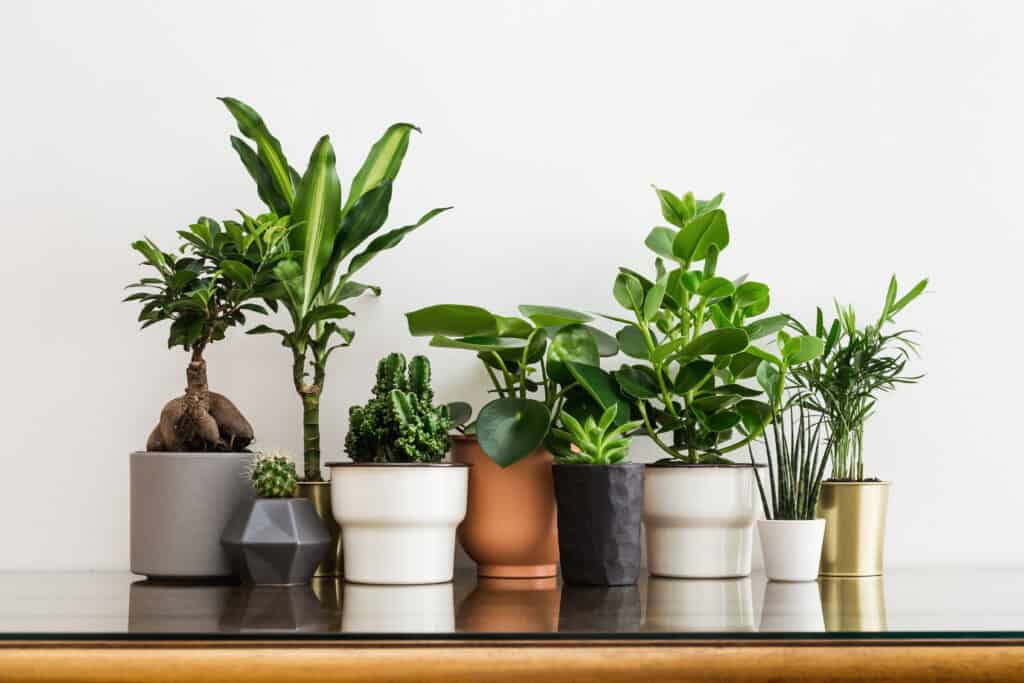
It is tempting to start out with a dozen plants. But pace yourself!
©Mallmo/Shutterstock.com
For new plant parents, it may be tempting to buy a dozen houseplants to start their collection. However, one of our houseplant pointers is to start slowly with just one or two plants.
Having fewer plants allows for more attention to each individual plant, ensuring that they stay healthy and have the best chance of thriving. This also gives the plant parent an opportunity to become more in tune with the needs of each plant, allowing for better care in the future.
Additionally, starting with one or two plants provides the opportunity to experiment with different types of plants, finding the ones that are best suited to the environment and one’s lifestyle. Starting off with a manageable number of plants is a great way for new plant parents to gain knowledge and confidence as they develop their green thumb.
3. Quarantine New Plants

Be sure to place new houseplants in an area alone. You don’t want anything to spread to your collection.
©Mid Tran Designer/Shutterstock.com
One of the really important houseplant pointers is to quarantine newly purchased plants to ensure the health of your houseplant collection. Quarantining helps to prevent the spread of any pests or diseases that may be present in the new plants. This can be accomplished by keeping the new plants away from your existing collection and monitoring them for signs of disease. Taking the time to quarantine new plants will help to keep your houseplant collection healthy and vibrant.
4. Wait to Change the Pot
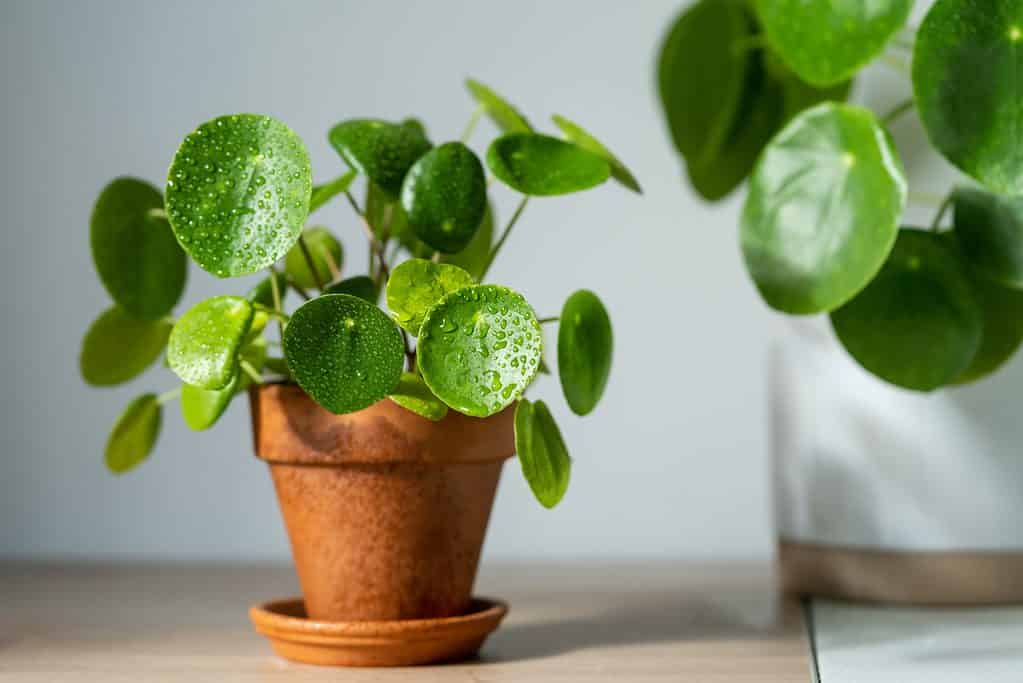
One of the most important houseplant pointers is to let your newly purchased plant adjust before repotting it.
©DimaBerlin/Shutterstock.com
Waiting a few weeks before changing the soil or pot of a newly purchased houseplant is one of the most overlooked houseplant pointers. A brief wait gives the plant time to adjust to its new environment. The stress of being moved to a new home can take its toll on a plant, so allowing it to settle in and get comfortable before making any further changes is important. Additionally, giving the plant a few weeks to get used to its new home can help it establish a healthy root system and overall thrive.
5. Understand Lighting Requirements
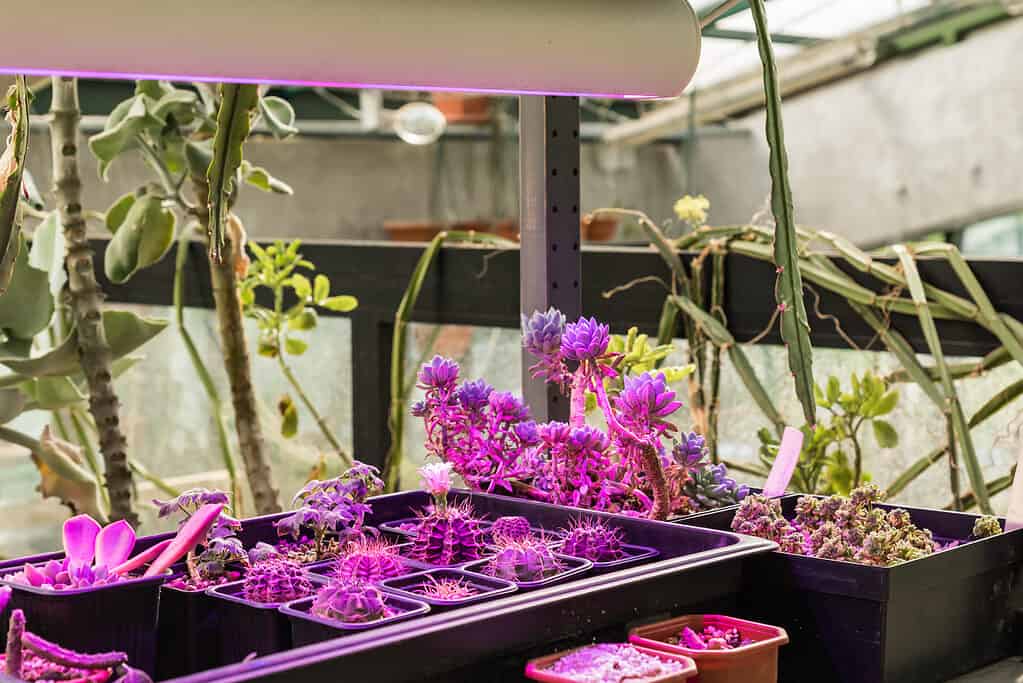
If you don’t have a handy south-facing window with full sunlight, grow lights are surprisingly cheap.
©Irina Kvyatkovskaya/Shutterstock.com
In order for plants to be healthy, they need the proper amount of light in order to create chlorophyll, which helps them absorb energy from the sun. Not all plants have the same needs when it comes to light; for instance, some plants, such as crotons and cacti, need direct sunlight to thrive, while ferns and begonias will wilt if left in too much sunshine. It is important to research the lighting requirements for your specific type of plant in order to ensure it remains happy and healthy.
Generally, house plants are described as low light, medium light, or high light. But what does this mean exactly? Low-light plants can do with just 3 or 4 hours of indirect sun per day. Medium-light plants need at least 4 hours of indirect sunlight, and 6 is even better. High-light plants should have 6 hours at the minimum and ideally 8 hours of direct sun daily. If your house does not provide the necessary amount of light for your plant, you can use artificial lights to supplement the natural light. Store-bought grow lights with 5,000 kelvin are very effective. Hang them 18 to 24 inches above the plant.
6. Choose the Right Soil for the Plant

Planting a cactus in a large pot with heavy soil is a recipe for disaster. Choose the right soil!
©Jessica Doza/Shutterstock.com
Choosing the right potting soil for a houseplant is one of the essential houseplant pointers. Different plants have different soil requirements, and using the wrong kind of soil can lead to stunted growth, discoloration, and even death. Luckily, there are unique mixes premade in stores for many types of plants. For example, there is a cactus mix for succulent and cactus plants and an African violet mix specifically for these plants.
The right potting soil should provide good drainage and aeration and should contain the right mix of organic and inorganic materials to provide adequate nutrients. The soil should also be pH-balanced for the particular plant. By selecting the correct potting soil, you can ensure your houseplants will thrive and have a long life.
7. Select Pots of the Right Size
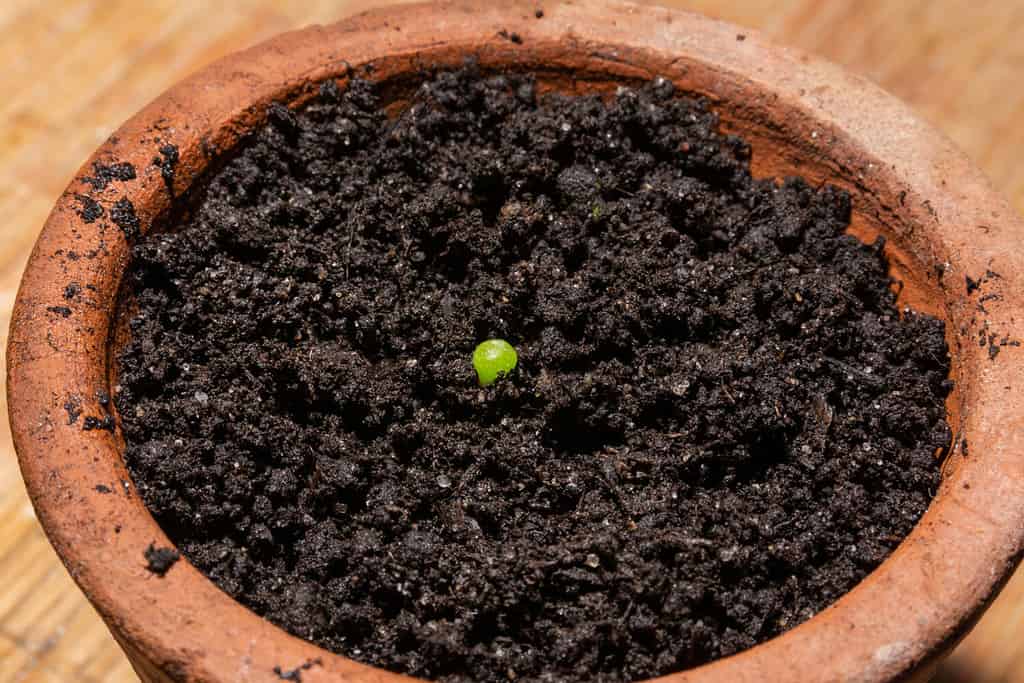
Choose a pot that is only 2 inches bigger than the rootball of your plant.
©Emmily/Shutterstock.com
When it comes to the size of a pot for your plant, it’s important to get it right. If the pot is too large for the plant, the soil dries slowly, making it more susceptible to root rot. On the other hand, if the pot is too small, the soil dries so quickly that it can be difficult to keep it watered sufficiently. Additionally, if the plant is too large for its pot, it can easily tip over.
Choosing the right size pot for your plant is essential for its health and well-being. The size of the pot should generally be slightly larger than the root ball of the plant so that the roots have enough space to grow. A pot about two inches bigger than the rootball is ideal. This will ensure that the soil stays moist but not soggy and the plant is able to remain upright.
8. Always Use Pots with Holes
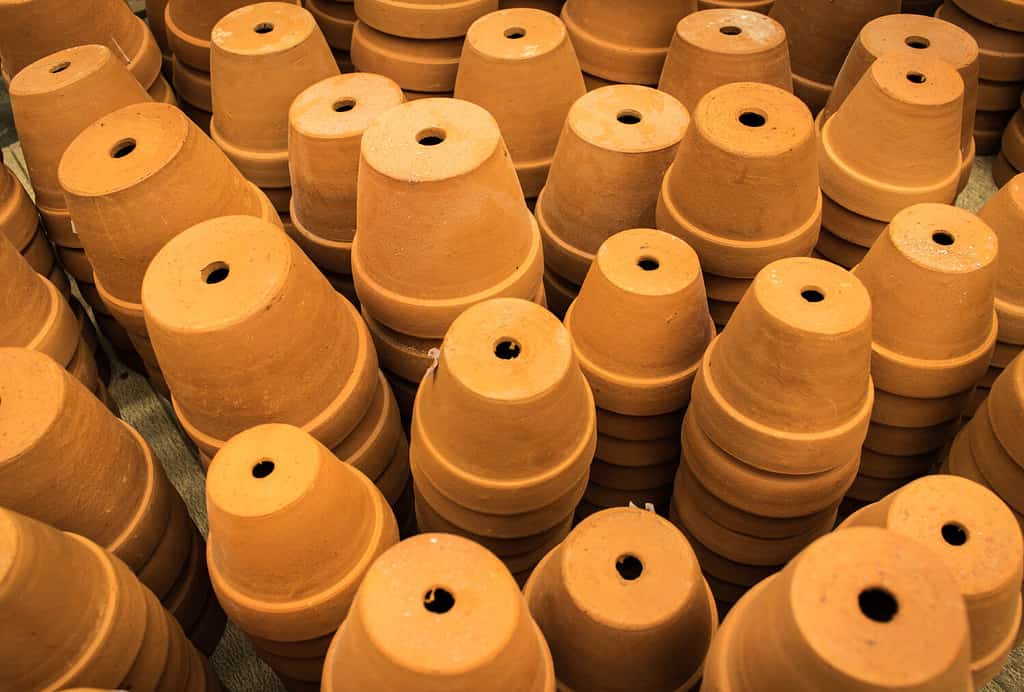
Using pots with excellent drainage and aeration, like terracotta, is one of the crucial houseplant pointers.
©Zulashai/Shutterstock.com
Houseplants thrive in pots with drainage holes because they allow excess water to drain out of the pot, preventing the soil from becoming waterlogged. This helps prevent root rot, a common problem for houseplants.
Pots without drainage holes trap the water and can cause the soil to become soggy, providing the perfect environment for root rot to occur. Root rot can cause the death of houseplants, so it is important to ensure that you provide adequate drainage to prevent this from happening.
9. Houseplant Pointers—Don’t Kill Your Plants with Kindness
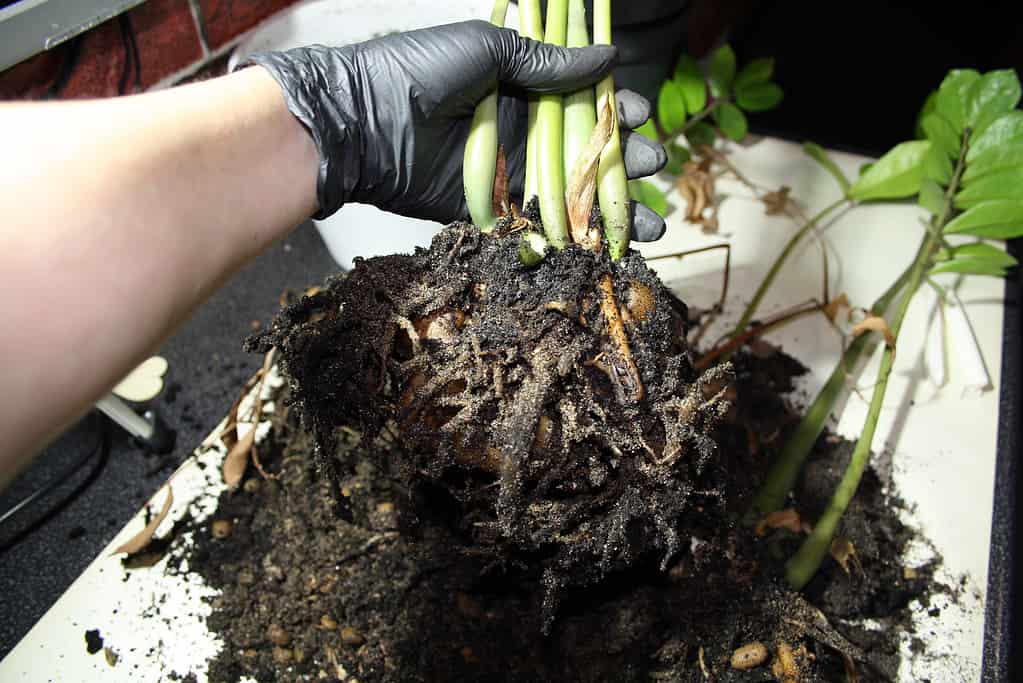
This plant’s roots are mushy and rotten. It has been killed with kindness by overwatering.
©Olga Yakovleva/iStock via Getty Images
This is one of the houseplant pointers that is often overlooked. Overwatering is a common mistake made by new plant parents when caring for houseplants. So common, in fact, that overwatering is the number one cause of death for houseplants. It occurs when too much water is given to a plant, resulting in waterlogged soil that suffocates the plant’s roots. This prevents the plant from absorbing the oxygen and nutrients it needs in order to grow.
When a plant is overwatered, it can become stressed and start to yellow, wilt, or develop mold. If symptoms of overwatering are not addressed quickly, the plant may eventually die.
To avoid overwatering, it is best to check the soil of the plant before watering. If it is still moist, it is likely not necessary to water the plant at that time. Additionally, it is important to water the plant deeply and infrequently. This will allow the water to penetrate the soil and reach the plant’s roots.
10. Increase Humidity
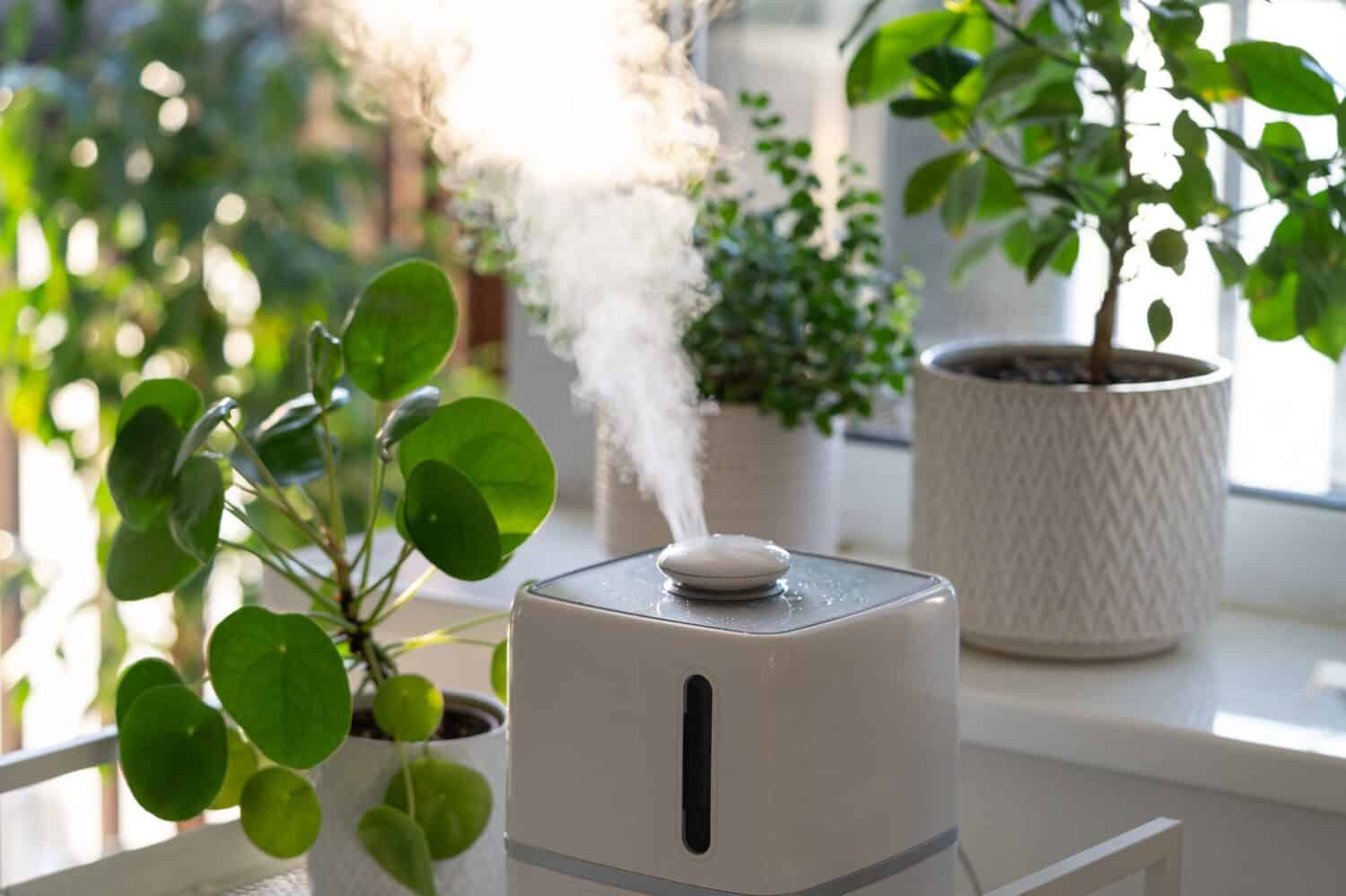
An indoor humidifier is one of the greatest houseplant pointers for tropical rainforest plants.
©DimaBerlin/Shutterstock.com
Many plants that originate from rainforests, such as ferns, pothos, ficus, and palms, prefer a more humid atmosphere. As the air in centrally-heated homes can dry out significantly during the winter months, it is wise for any plant parent to consider adding a humidifier to their residence in order to keep these species content. Succulents and cacti, however, do not require this level of humidity.
If you want to increase the humidity around certain plants, try putting them on a large saucer filled with pebbles and then set it in a reservoir of water. Make sure the plant is not directly in the water. Some people mist their plants to briefly improve humidity, but this is only temporary and does not offer long-term benefits.
11. Do Not Underwater
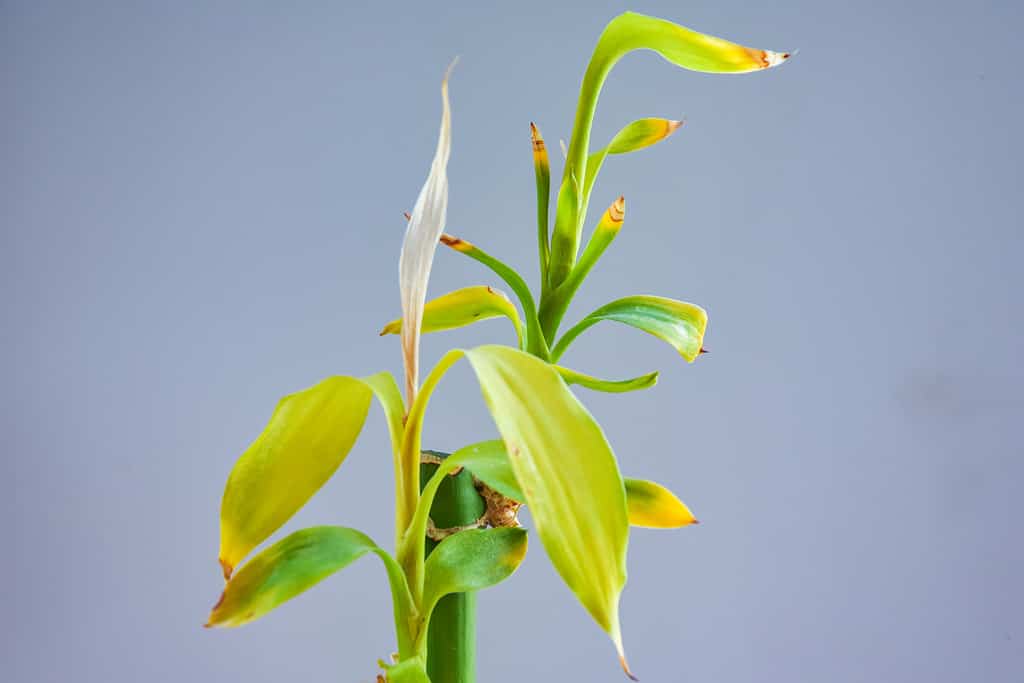
This lucky bamboo is not feeling very lucky. It has not received enough water.
©Atewi/Shutterstock.com
New houseplant enthusiasts can maintain a healthy and happy plant by striking the right balance between under and overwatering. To avoid underwatering, it is important to check the soil moisture level regularly and water the plant when it begins to feel dry. Allowing the soil to dry in between waterings can help prevent overwatering, which can lead to root rot and other issues. It is also important to select the right pot size for the plant and adjust the watering schedule according to the size of the pot. Most important of all, know the watering requirements of your particular plant. They are not all the same!
12. Feed Just the Right Amount
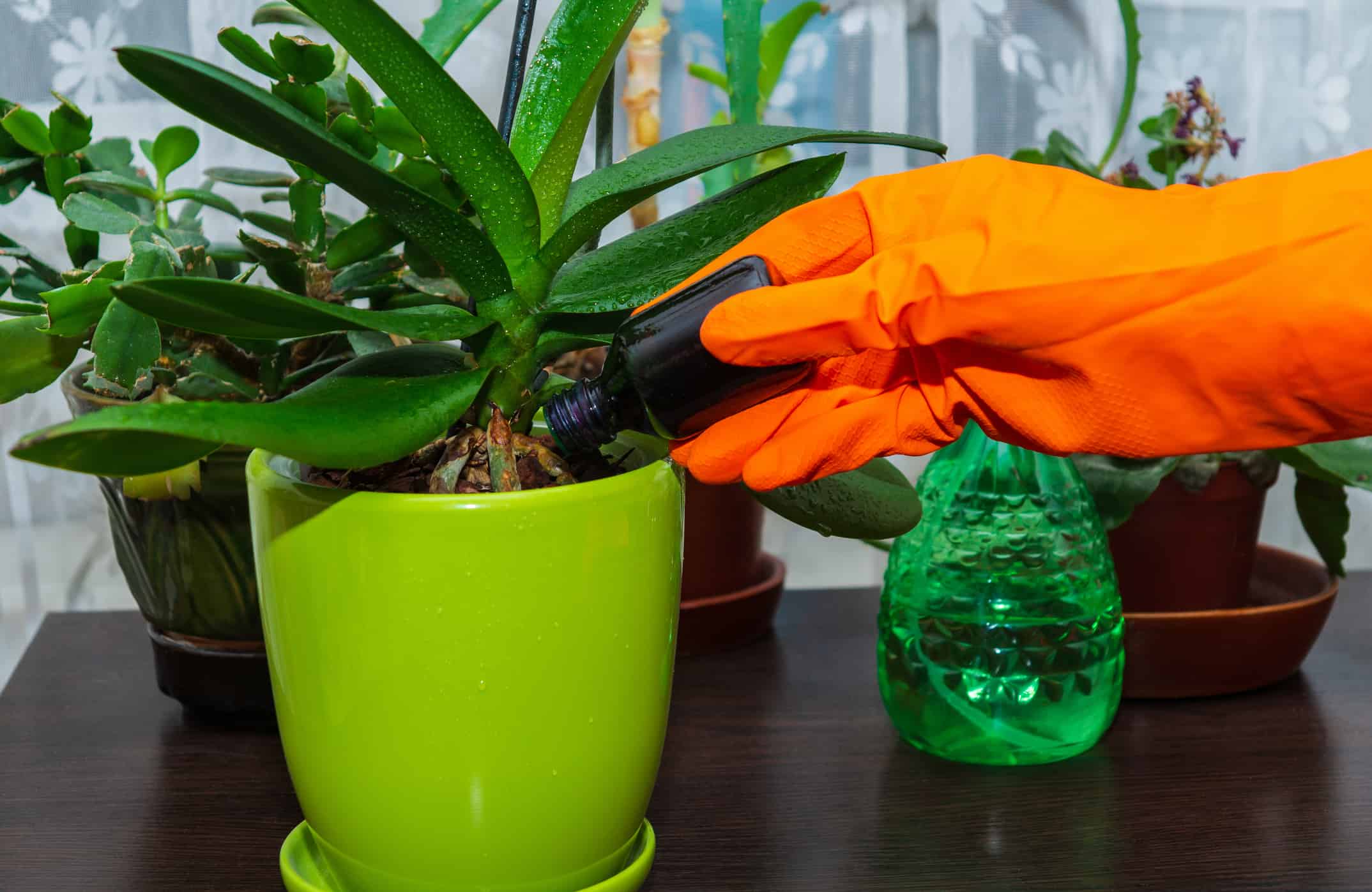
Giving your plants the exact right amount of fertilizer is one of the houseplant pointers that takes practice.
©iStock.com/VITALII BORKOVSKYI
During the spring and summer, it’s important to remember that plants need to eat, too. Indoor plants should be given a dose of either a dry granular fertilizer or diluted liquid plant food every 1-2 months. Be careful not to overfeed your plants, as it can cause them to grow too quickly. Too much food can also burn sensitive plant roots or cause excess build-up of salts and minerals in the soil. There is no need to feed plants during the winter when they are dormant.
13. Houseplant Pointers—Inspect for Pests
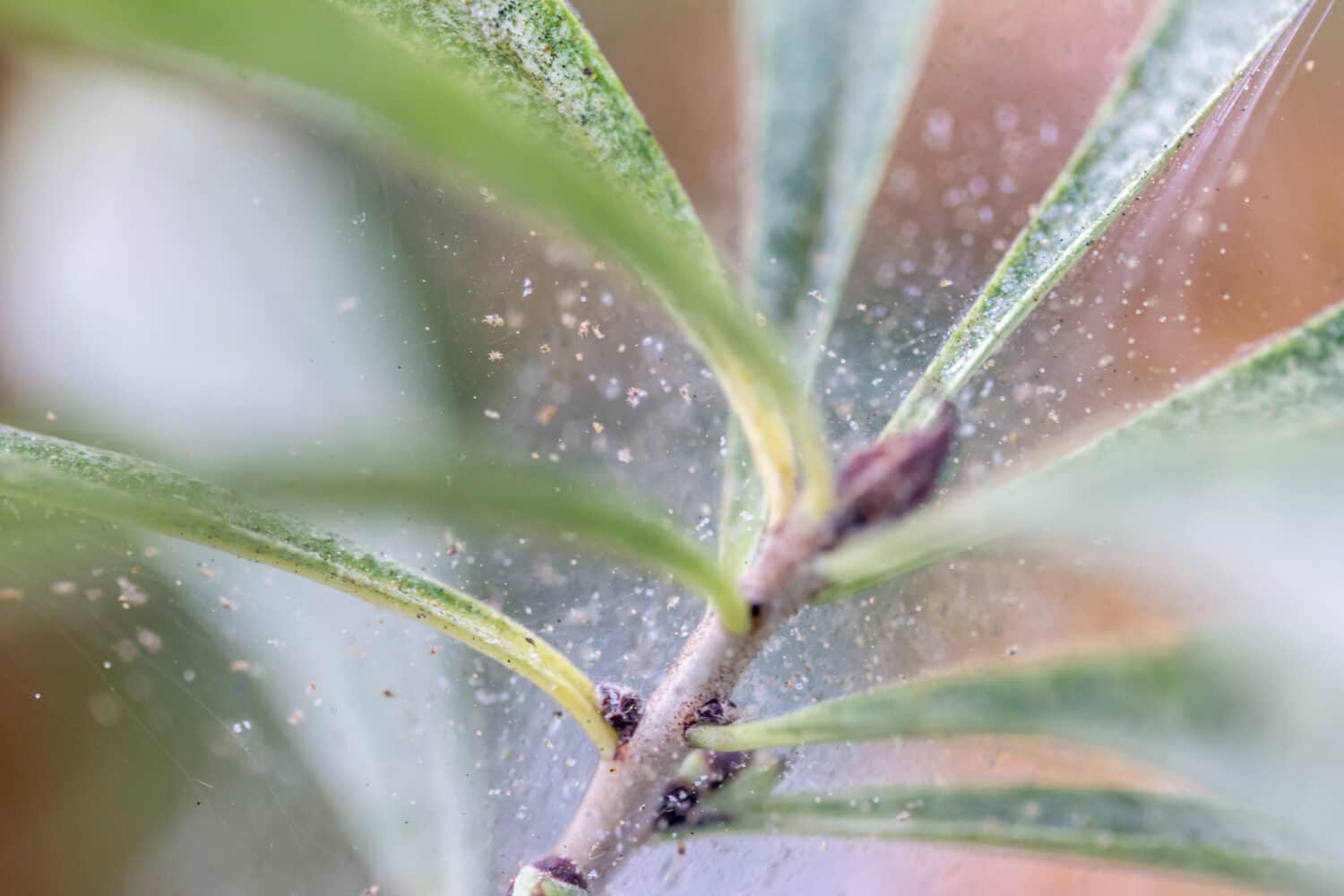
If you neglect houseplant inspections, you may end up with a terrible spider mite infestation like this one.
©Robert Lessmann/Shutterstock.com
It is beneficial for plant owners to conduct an examination of their plants at least once a week. This houseplant pointer is especially crucial during the winter when dry air creates a hospitable atmosphere for pests such as spider mites and aphids. If you want to be a pro at this, buy a magnifying glass. Seriously.
Assure that you look at the leaves and stems from both sides to spot and take out the pests before their population becomes too great. If you do find any bugs, it’s recommended to buy insecticidal soap spray from a garden center instead of making your own mix, which could be wrong. Additionally, separate the infested plant from the others until the issue is managed.
14. Consider Semi-Hydroponic Systems

Clay aggregate is a semi-hydroponic substrate that makes watering houseplants a breeze.
©Anastasia_Kot/Shutterstock.com
Semi-hydropic systems, like LECA, provide many benefits for houseplant owners. They are easy to set up and maintain, require less water than traditional soil-based garden systems, and promote healthy root growth. Additionally, they can take the guesswork out of watering as you simply fill the reservoir.
The lightweight materials used in the system make it ideal for balconies and other areas where weight is a factor. And because the system can be customized to fit any plant, you can create a unique and attractive display. Overall, semi-hydropic systems like LECA are an ideal solution for houseplant owners looking for an easy and efficient way to grow and display their plants.
15. Houseplant Pointers—Get Free Plants by Propagating
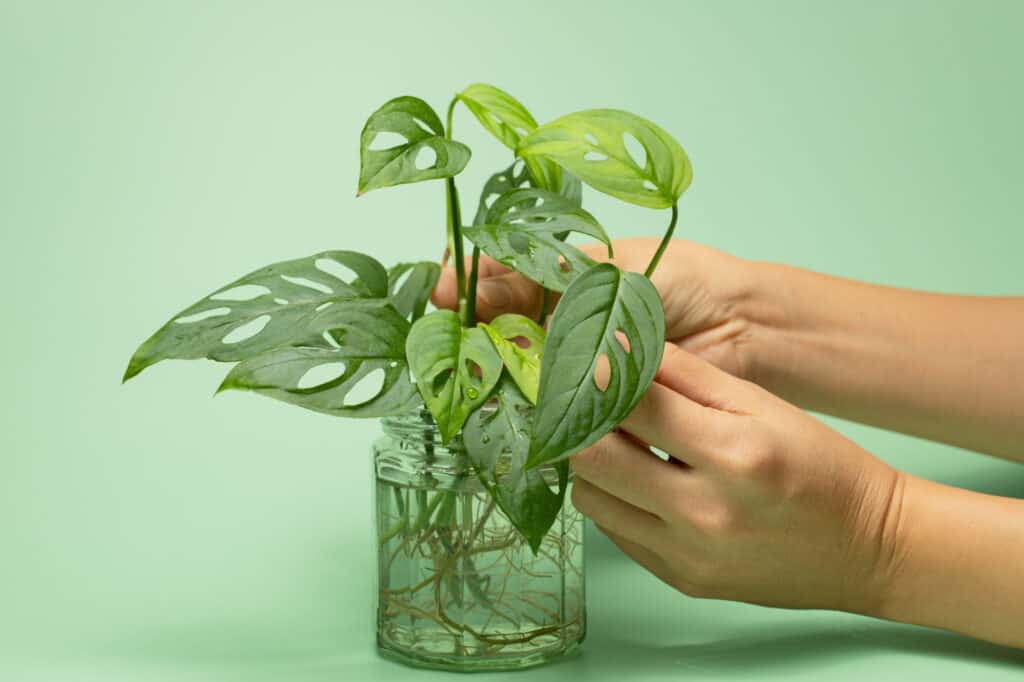
Of all the houseplant pointers, propagation is our favorite. Free plants!
©AngieYeoh/Shutterstock.com
Propagating houseplants is an incredibly rewarding experience. Not only is it a great way to add more greenery to the home without spending money, but it also brings a sense of satisfaction that comes with transforming a single plant into many.
Propagating can be done in a variety of ways. The most common methods are stem cuttings, division, and layering. Many types of plants can be propagated by cutting off a stem and putting in a glass of water. The easiest examples are pothos, philodendron, cane begonia, and monstera.
Propagating houseplants is an incredibly satisfying experience. Not only is it a great way to add greenery to the home without spending money, but it also brings a sense of accomplishment that comes with transforming a single plant into many.
16. Keep the Temperature Stable
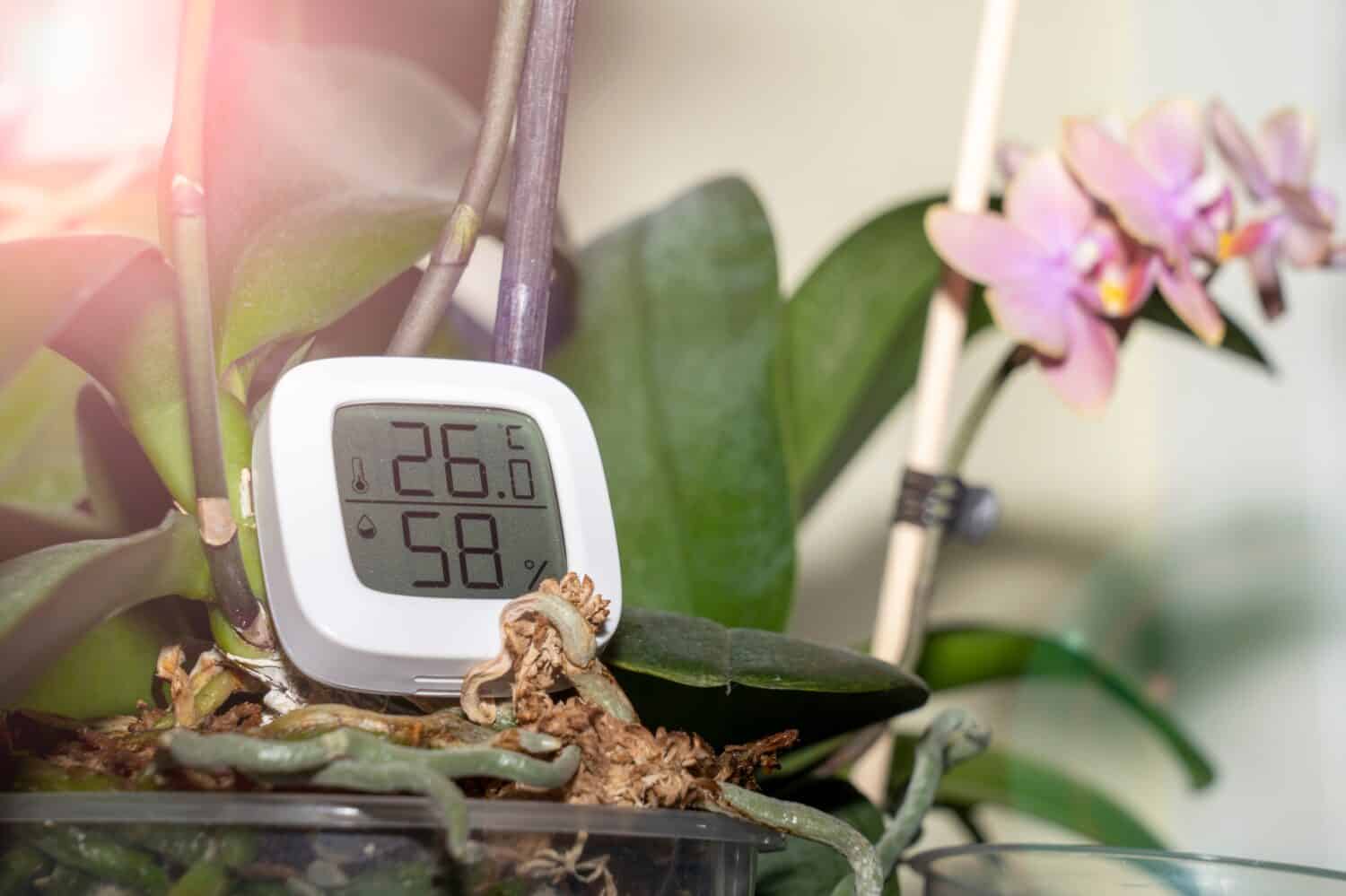
A simple plant thermometer will tell you the temperature and humidity near your houseplants.
©AntonSAN/Shutterstock.com
Maintain your plant’s environment as consistently as you can. Changes that are too drastic can be very stressful for plants. Aim to keep the temperature in the range of 65 to 85 degrees Fahrenheit, and make sure not to put your plants near radiators, ducts, vents, or air-conditioners. These types of drafts are too chilly for some plants, too hot for others, and dry out the soil too quickly. Additionally, some indoor flowering plants, like Christmas cactus, enjoy a period of chill at 50°F to set new buds.
17. Buy Plants From Reputable Sources

Buying plants from people who know about plants is one of the houseplant pointers that is often ignored.
©Oksana Lyskova/Shutterstock.com
When looking for plants, make sure to buy them from a reliable source like a garden center, nursery, or florist. The people who work there are typically knowledgeable about plants and can answer any questions you have. If you’re new to taking care of plants, avoid big department stores or supermarkets, as the plants there may not be in the best condition. Make sure to examine the plants for any yellow leaves, mildew, strange spots, brown tips, and weak stems, as these can be signs of an unhealthy plant.
The photo featured at the top of this post is © Viktor Sergeevich/Shutterstock.com
Thank you for reading! Have some feedback for us? Contact the AZ Animals editorial team.






